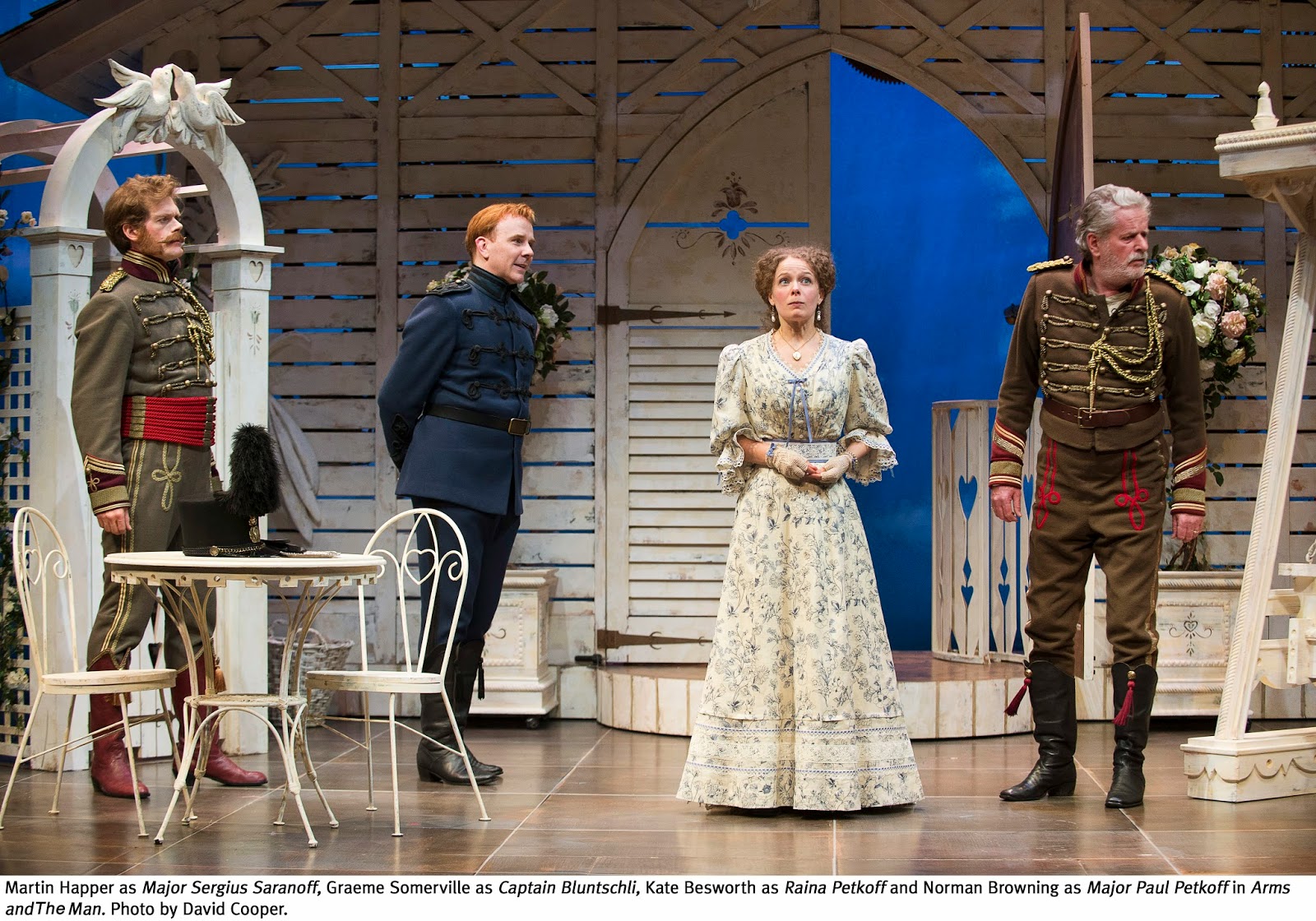Tom McCamus, Seana McKenna. Photo by Don Dixon.
Reviewed by James
Karas
The Stratford Festival delivers a straightforward but interesting
reading of King John directed by Tim Carroll in the Tom Patterson Theatre.
It is not one of Shakespeare’s best plays and it is hard to sink your teeth
into it but you will get a decent bite from this staging.
King John tells the story of the struggle between the French
and the English over control of each other’s country. King Philip of France wants
England and King John of England wants France. Add a couple dozen characters,
include fornication, bastardization, usurpation, excommunication and
assassination and you get an early Shakespearean history play.
Carroll directs Tom McCamus to give us an erratic, cunning and perhaps unstable
King John. This is an interesting interpretation of the character. McCamus’s
performance is superb.
Graham Abbey plays Philip the Bastard, an ambitious, heroic, colourful
and boisterous character fathered by Richard The Lionheart. Abbey is good as Philip
in a sea of relatively undistinguished nobles.
Peter Hutt gives a convincing performance as Philip, The King of France.
Philip is trying to get control of England by promoting Prince Arthur, John’s
nephew by an older brother.
King John has a couple of good roles for women. One of
them is Queen Eleanor, King John’s mother and Patricia Collins does a very good
job in the role. The best female role is that of Constance, the mother of
Prince Arthur and Seana McKenna, as usual, has the regal bearing and vocal
intonation for the role. Constance suffers from long-windedness at times but
McKenna is a pleasure to watch.
Noah Jalava did an exceptional job as young Prince Arthur. He has the
sweet voice and appearance of a youngster and when Arthur pleads for his life he
is able to convince his appointed murderer to desist. Well done.
Carroll pays attention to the text and does not rush us through the
play. The play has very little introspection and trades soliloquies for alarums
and flag waving for battle scenes. There are sword fights, of course, but the
rushing on and off stage to give the impression of an excitement are kept to a
minimum. Philip the Bastard decapitates the Duke of Austria (Sean Arbuckle) off
stage, enters with the gory head and gives it to a spectator in the front row.
It gets a mild laugh but the point of this directorial silliness escapes me.
There are candles prominently set on the stage as well as a number of chandeliers
hanging from the ceiling. The play begins and ends with the singing of the
Norman hymn “Salva nos, stella maris,” (Save us, star of the sea), a beautiful
prayer to the Virgin Mary.
Religion or at least the Catholic Church
play an important part in the play with the presence of Cardinal Pandulph
(Brian Tree), the Pope’s legate ready to excommunicate and readmit into the
fold.
I am not sure how much
one can do with King John but Carroll’s staging struck me as bringing out the
limited virtues of the play.

















